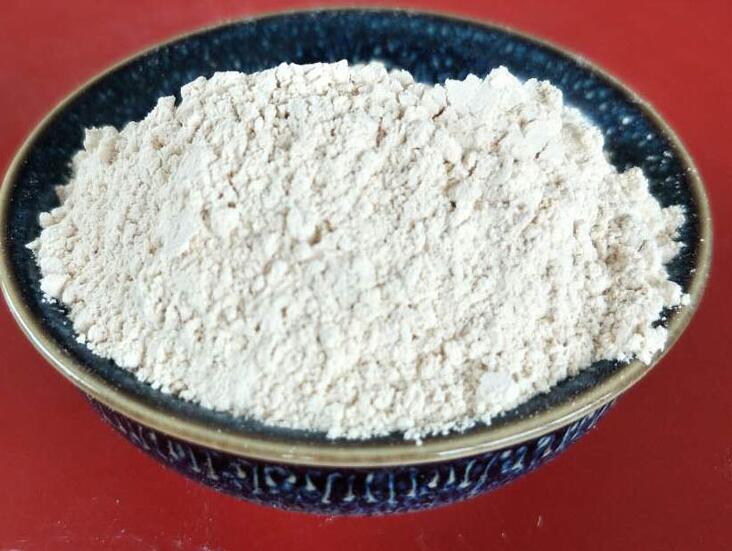Study on Preparation of Ultrafine Flake Magnesium Hydroxide from Light-burned Magnesium Powder

Magnesium hydroxide (Mg(OH)₂), as an important inorganic compound, has a wide range of applications in flame retardants, environmentally friendly materials, catalyst carriers and other fields. Ultrafine flaky magnesium hydroxide has higher activity and better performance due to its unique morphology and large specific surface area. Light-burned magnesium powder (i.e. partially oxidized magnesium powder) is a low-cost and readily available raw material that can be converted into ultrafine flaky magnesium hydroxide through appropriate chemical reactions. This study aims to explore how to use light-burned magnesium powder to prepare ultrafine flaky magnesium hydroxide with excellent performance.
Experimental principle
The main component of light-burned magnesium powder is magnesium oxide (MgO). Under appropriate conditions, magnesium hydroxide can be generated by reacting with alkaline solution. The reaction equation is as follows: MgO+H2O+OH−→Mg(OH)2MgO+H2O+OH−→Mg(OH)2
By controlling the reaction conditions (such as temperature, pH value, reaction time, etc.), the morphology and size of magnesium hydroxide can be adjusted to prepare ultrafine flaky magnesium hydroxide.
Experimental materials and methods
Experimental materials
Light-burned magnesium powder: as raw material.
Alkaline solution: such as sodium hydroxide (NaOH) solution.
Other reagents: such as deionized water, pH regulator, etc.
Experimental steps
Solution preparation: Dissolve a certain concentration of NaOH in deionized water to prepare an alkaline solution.
Reaction mixing: Add light-burned magnesium powder to the alkaline solution and mix it evenly by mechanical stirring or ultrasonic dispersion.
Reaction condition control:
Temperature control: The reaction is carried out at a certain temperature, usually between 60°C and 90°C.
pH value adjustment: Ensure the smooth progress of the reaction by adjusting the pH value of the solution (usually 10 to 12).
Reaction time: Set the reaction time according to the experimental needs, usually between a few hours and more than ten hours.
Product separation and washing: After the reaction is completed, the generated magnesium hydroxide precipitate is separated by centrifugation or filtration, and washed with deionized water several times to remove the residual alkaline substances.
Drying and calcination: The washed magnesium hydroxide precipitate is dried at a certain temperature and calcined if necessary to obtain pure ultrafine flaky magnesium hydroxide.
Influencing factors
Reaction temperature: Temperature has an important influence on the generation rate and morphology of magnesium hydroxide. Higher temperature can accelerate the reaction rate, but it may also cause the magnesium hydroxide particles to grow.
pH value: The adjustment of pH value is crucial to control the morphology of magnesium hydroxide. Too high pH value may cause the magnesium hydroxide particles to aggregate.
Reaction time: Appropriate reaction time helps to ensure the complete generation of magnesium hydroxide, and too short time may lead to incomplete reaction.
Light-burned magnesium powder particle size: The particle size of light-burned magnesium powder also affects the morphology and size of magnesium hydroxide. Smaller particle size is conducive to improving the uniformity of the reaction and the dispersibility of the product.
Performance test
Morphology analysis: The morphology of ultrafine flaky magnesium hydroxide was observed using scanning electron microscopy (SEM) and transmission electron microscopy (TEM).
Purity analysis: The crystal phase structure of the product was analyzed by X-ray diffraction (XRD) to ensure that it is pure magnesium hydroxide.
Particle size distribution: The particle size distribution of magnesium hydroxide was determined using a laser particle size analyzer or dynamic light scattering (DLS) technology.
Thermal stability: The thermal stability of magnesium hydroxide was tested by thermogravimetric analysis (TGA).
Results and Discussion
Morphology control: The experimental results show that magnesium hydroxide with ultrafine flaky morphology can be successfully prepared by controlling the reaction conditions. SEM and TEM images show that the product has a uniform flaky structure.
Purity verification: XRD analysis confirms that the product is pure magnesium hydroxide with good crystallinity.
Particle size distribution: Particle size analysis shows that the prepared magnesium hydroxide has a narrow particle size distribution and is suitable for use as a high-performance material.
Thermal stability: TGA results show that the prepared magnesium hydroxide has good thermal stability and is suitable for application at high temperatures.
The preparation of ultrafine flaky magnesium hydroxide using light-burned magnesium powder is a feasible method. By optimizing the reaction conditions, the morphology and size of magnesium hydroxide can be effectively controlled, thereby obtaining ultrafine flaky magnesium hydroxide with excellent performance. This study provides new ideas and technical support for the development of high-performance magnesium hydroxide materials








